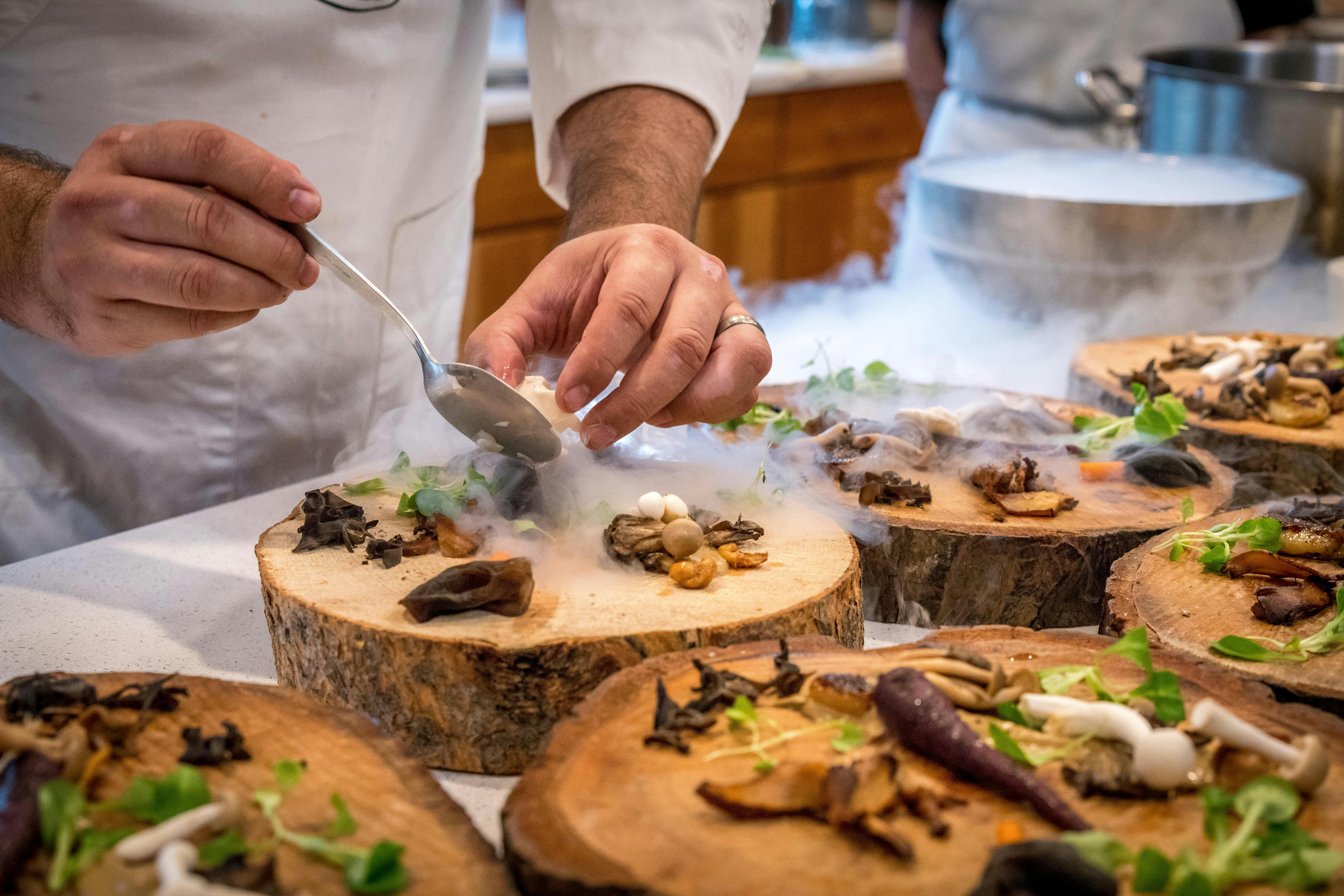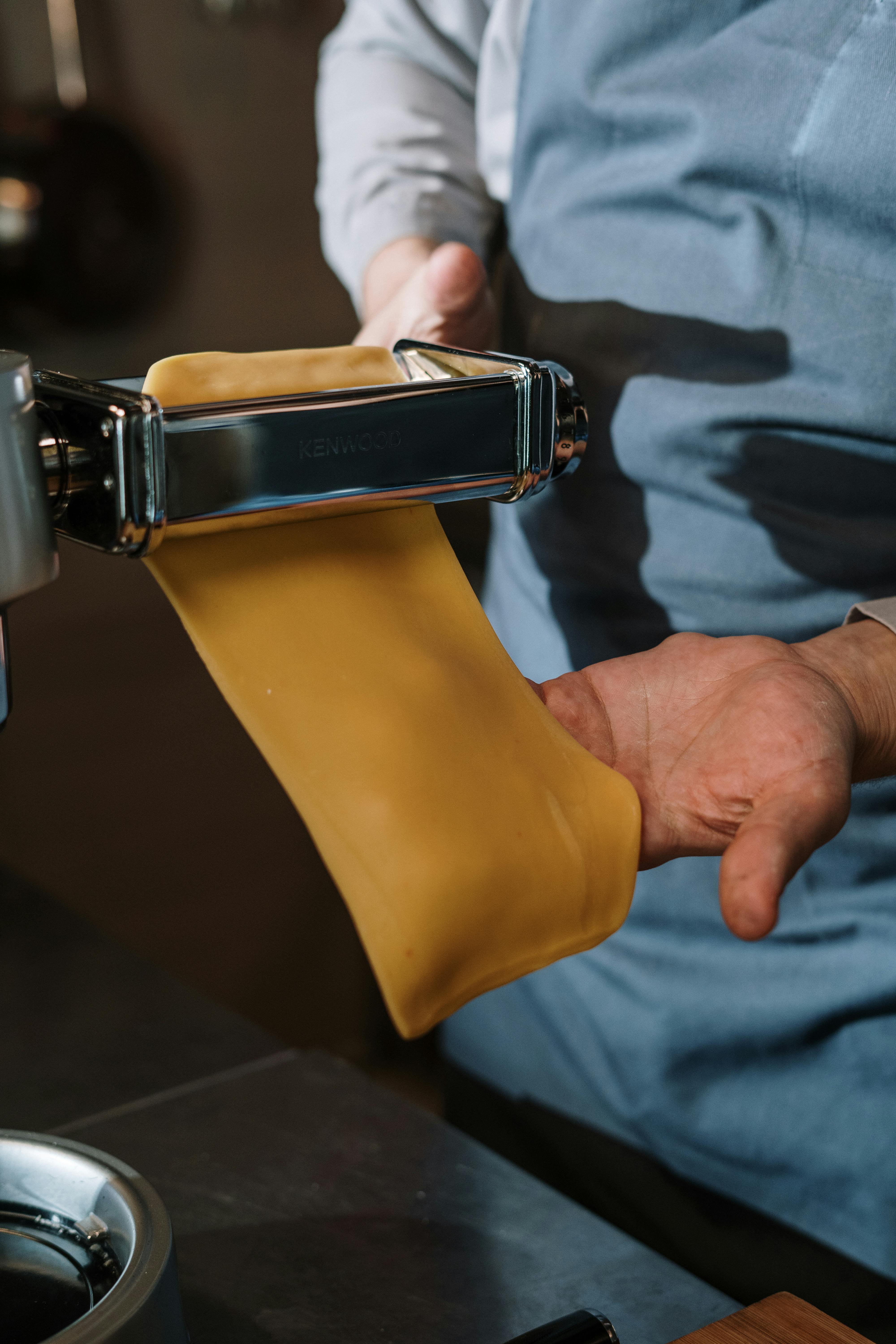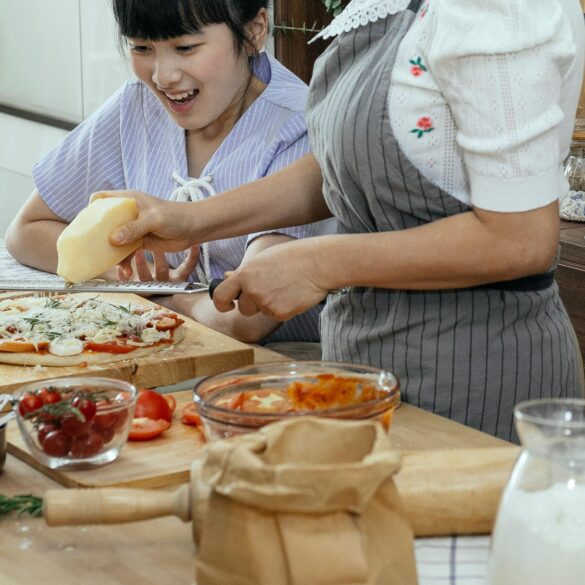Sweden’s Kitchen Checklist: Transform Your Home With Chef Techniques
Let’s be honest—most of us have wandered into a friend’s kitchen and thought, “How is this place so organized, so welcoming, so… Swedish?” While many believe Swedish kitchens are all about minimalist aesthetics, what actually strikes me is how function always comes before form. I’ve spent more hours than I care to admit consulting for kitchen makeovers in Stockholm apartments and country cottages (the kind where sunlight spills across natural wood floors), and every time, Swedish design delivers something special—efficiency, warmth, and genuine culinary creativity.1
Here’s my promise up front: this article breaks down—step by step—the very checklist Swedish chefs and savvy home cooks use to reinvent ordinary kitchens into pro-level culinary command centers. We’ll dig into everything from lighting and layout (and, trust me, the work triangle is just the beginning), through smart storage and chef-approved tools, to what actually goes on a Scandinavian pantry shelf in midwinter. Expect stories, stats, honest mistakes, and practical upgrades you can actually implement without hiring a design firm or learning Swedish. So, sound familiar? That longing for a kitchen that isn’t just stylish, but genuinely functional, even if you’re prepping a Tuesday pasta or an ambitious holiday spread. Well—let’s get to it.
Swedish Design Principles: Beyond Minimalism
Back when I first started working with Swedish designers, I assumed “minimalism” meant barren counters and cold white walls. Actually, let me clarify—Swedish kitchen design is really about blending functionality, natural materials (think birch, ash, and stone), and soft lines that invite you to spend real time cooking, chatting, and living. It’s this blend—what Swedes call “lagom,” meaning just the right amount—that gives their kitchens enduring appeal, whether you’re slow-roasting root veg in December or hosting summer fika on the balcony.2
Here’s what gets me: Swedish designers are obsessed with flow. That means easy movement between sink, stove, and fridge—no matter the size of your kitchen or the chaos of a busy family weekend. When I questioned one designer why so many Swedish homes kept classic kitchen islands small instead of sprawling, she laughed and said, “You want a dance floor, not just a dining room!” The result? Kitchens where nothing—no appliance, no stray mug—interrupts your actual cooking process. And that’s why professional chefs who train in Stockholm often bring these design ideas home, tweaking them for every space (even urban shoebox kitchens).3
- Prioritize natural materials for counters and floors—wood, stone, and sustainable laminates are durable yet welcoming.
- Choose cabinetry with hidden storage features, maximizing space without visual clutter.
- Use open shelving for frequently used items—this encourages cooking spontaneity, not just display.
- Emphasize ergonomic counter heights for real cooking comfort—Swedish standard: 36-37 inches.4
Pro Chef Layouts: The Magic Work Triangle
I remember when the “work triangle” concept first entered mainstream kitchen design conversations, but Swedes have refined it with relentless practicality. The goal: every ingredient, every tool, every pot is within arm’s reach—meaning less time spent hunting for the colander, more time spent perfecting your mushroom risotto or cinnamon buns.6
What really struck me was how chef-led design in Sweden has evolved. Chefs like Frida Ronge and Niklas Ekstedt position their home kitchens to mimic professional workflows, compressing movement and amplifying efficiency. Years ago, I met Ronge in Göteborg and watched her prep both seafood and vegetarian menus in a home kitchen that felt almost… athletic. She explained, “I want every motion to count—otherwise, what’s the point?” That’s the heart of it.
- Map your triangle: Plot fridge, sink, and stove, leaving unobstructed pathways. Aim for 4-7 feet between each zone.
- Realign appliances and prep areas if your kitchen feels cramped—small moves (like relocating the trash bin) often make a big difference.
- Install task lighting above each zone—good lighting transforms both safety and food quality.
That’s the intro. Now, let’s break down the Swedish toolkit and chef-level secrets you can steal for your own kitchen.
Essential Tools & Cooking Techniques: Level Up Like a Chef
Here’s where things get real. Most aspiring home cooks ask me, “What tools do I actually need, not just for show?” Funny thing is—I used to believe my IKEA starter set was enough, but after shadowing Swedish chefs, my whole toolkit changed.7
- High-carbon chef’s knife: Swedish steel brands (Mora, EKA) have a reputation for balance and durability. The difference in prep speed is bonkers.
- Cast iron & carbon steel pans: That classic sear, versatility, and heat retention. A chef I worked with always said, “Season your pans like you season your friendships—often!”
- Wooden cutting boards: Swedes swear by wood for durability and hygiene (bar none, far better than plastic for long-term safety and flavor retention).
- Digital scales: Essential for baking and Nordic breads—measurements matter more than eyeballing.8
- Mandolin slicers: For those paper-thin root vegetable salads every Swedish chef seems to love—precision and speed.
- Immersion blender: For soups, sauces, and emulsions—indispensable in Scandinavian kitchens.9
But tools only get you so far. The techniques matter even more—a lesson I learned firsthand after burning three batches of gravlax because I’d overlooked temperature control. Swedish chefs prize mise en place, pre-measuring and prepping every ingredient (think tiny glass bowls on every counter), so cooking becomes a flow, not a scramble.
Technique Spotlight: “Lagom” Cooking
Ever notice how Swedish recipes rarely go overboard with seasoning or complexity? “Lagom” (just enough) isn’t just about flavor—it’s about applying precise heat, seasoning, and timing. From my perspective, the best home cooks I’ve met in Sweden use lagom in every step, swapping excess for clarity. They aim for subtle herbs, measured salt, and balanced acidity (apple cider vinegar is a pantry staple).10
Swedish Pantry Secrets: Stock Like a Chef
Actual Swedish home pantries? Honestly, not as sparse as Instagram shows. I’ve peeked into dozens while consulting, and here’s what I consistently find: preserved berries, rye flour, pickled veg, dried fish, and six kinds of crispbread. The catch is seasonal adaptability—the pantry shifts with the seasons, built for both winter survival and summer abundance.11
| Staple | 目的 | 季节 | 厨师洞察 |
|---|---|---|---|
| Lingonberry jam | Acidity, traditional flavor | 全年 | Balancing fat-rich dishes (like meatballs) |
| Rye flour | Bread baking, crispbread | 全年 | Adds depth, fiber |
| Pickled cucumbers | Preserved veg, crunch | Fall/Winter | Cleans palate after fish |
| Smoked fish | Protein, depth of flavor | 春夏 | Fast lunches, tapas |
I’ve botched my first attempt at “snaps” (Swedish spiced spirits) by using too much dill—what I should have mentioned first, always balance herbs and acidity when making Swedish pantry staples. It’s a subtle science.
Quick-Start Pantry Upgrade Process
- Audit your current staples—ditch expired spices, keep seasonally relevant grains and berries.
- Build your base: Rye flour, pickled veg, dried mushrooms, lingonberry jam.
- Invest in airtight jars and label your preserves with date and type.
- Practice seasonal rotation—stock up during local harvest, preserve for winter.
So, got your tools and pantry in order? Next up: how the right lighting and ambience boost pro-level results—plus why seasonality matters every time you cook.

Lighting, Ambience & Seasonality: Elevating Every Meal
Honestly, every time someone tells me lighting is an afterthought, I want to just drag them into any Stockholm restaurant kitchen—where even the softest bulbs serve a strategic purpose. Swedish chefs (and families) obsess over light more than most, thanks to wild seasonal swings: summer’s endless brightness and winter’s deep gloom.13
What I’ve learned from several kitchen redesigns during Swedish Januarys: high-quality LED task lighting above work zones is, well, 绝对关键. It’s not just about mood—sharp, shadow-free light improves knife safety, ingredient perception, and plating consistency. Don’t ignore ambient levers: candles, dimmers, and warm tones create the hospitality Swedes are famous for.14
- Install under-cabinet lighting for prepping and plating—avoid hand shadows on the board.
- Use adjustable lamps/dimmers for flexible ambiance during meals and clean-up.
- Incorporate candles or pendant lights over dining areas—Swedish “mys” (coziness) in practice.
- Maximize natural daylight exposure—open blinds, minimize window coverings.
Speaking of ambience, let’s get honest: kitchen soundscapes matter, too. Chefs I’ve interviewed add curated playlists or open windows to hear birds and city life—even minor environmental adjustments nudge motivation and creativity during long prep sessions. A colleague in Malmö swears his fish dishes improved once he swapped silence for gentle jazz. Sound familiar?
Sustainability & Seasonal Cooking: Swedish Principles in Practice
I’m still learning the full depth of Swedish sustainability philosophy, but here’s what stands out: seasonality isn’t just trendy—it’s logistical. The average Swedish chef and home cook bases menus on what’s local, at its peak, and preserved for the cold months. Conference conversations reveal a national passion for foraging (wild mushrooms, berries, nettles), and industry reports show over 65% of Swedes regularly integrate organic, local produce.16
- Source local ingredients when possible—Swedish farmers’ markets are goldmines for seasonal goods.
- Compost food scraps—many Swedish municipalities support easy drop-offs.
- Practice batch cooking for energy efficiency—less power, fewer ingredients wasted.
- Choose reusable storage and packaging—ditch plastics for glass, linen, or beeswax wraps.17
What really excites me is the cultural pride behind seasonal menus. “We eat what grows,” chef Ronge told me. No imported strawberries in February—she’ll use pickled cherries or root vegetables instead. If you’re embracing chef-level cooking at home, challenge yourself to rotate recipes monthly and only splurge on imported ingredients when absolutely necessary.18 That’s where Swedish kitchens shine: every meal is a celebration of time and place.
Action Guide: Your Swedish Kitchen Makeover
- Evaluate your space: Measure, map flow, note obstacles and traffic zones.
- Upgrade tools: Invest in one chef-grade knife, one seasoned pan, and digital scale.
- Pantry audit: Swap expired goods for seasonal, local staples. Label everything.
- Install lighting: Aim for daylight maximization, plus under-cabinet and dimmer upgrades.
- Commit to seasonality: Plan meals around what’s fresh, local, and preserved.
- Practice mise en place: Always set up before you cook—speed and simplicity.
- Add music or ambient elements: Boost your cooking mood.
Looking ahead: next up, resources for deep dives and reference links to help you keep evolving. Let that sink in for a moment—transformation is never done; it’s a series of small, joyful steps.
Conclusion: The Swedish Way—Continuous Culinary Transformation
The more I consider Swedish kitchen culture, the clearer it becomes: transformation isn’t a weekend project; it’s a living philosophy. Back in 2019, when the “hygge” trend swept through Europe, many overlooked the parallel Swedish concept of “lagom”—moderation in everything, including home design and food. Swedish kitchens teach us resilience, adaptability, and ongoing joy: upgrade one shelf at a time, layer seasonal flavors, and don’t stress about perfection. Honestly, I reckon the best kitchens I’ve seen are those that evolve with their cooks, not just with Pinterest trends.19
Let me step back for a moment—every checklist item here comes from real experience. I’ve botched pan-roasts, installed terrible halogen lights, and once built an open shelf that collapsed from too many rye bread loaves (lesson learned: Swedish hardware matters). My thinking has evolved from chasing minimalism toward blending practical flow, chef-level techniques, and emotional warmth. Each home—and cook—is different, but the Swedish approach gives us a flexible framework for continuous improvement.
- Embrace local culture and seasonal produce—there’s joy in every small adjustment.
- Invest in quality, not quantity—the Swedish way is less but better.
- Value flow and community—open kitchens inspire connection and learning.
- Don’t stress over mistakes—they’re the best teacher you’ll ever have.
One more thing—transformation is contagious. Share what you learn, trade recipes and design tips with friends, and keep updating your own checklist year by year. Swedish chefs constantly refer to peer exchange as a secret weapon for true progress.20 Looking ahead, I’ll be continuously revisiting this list, updating tips and techniques as trends and culinary wisdom evolve.
参考文献及延伸阅读



